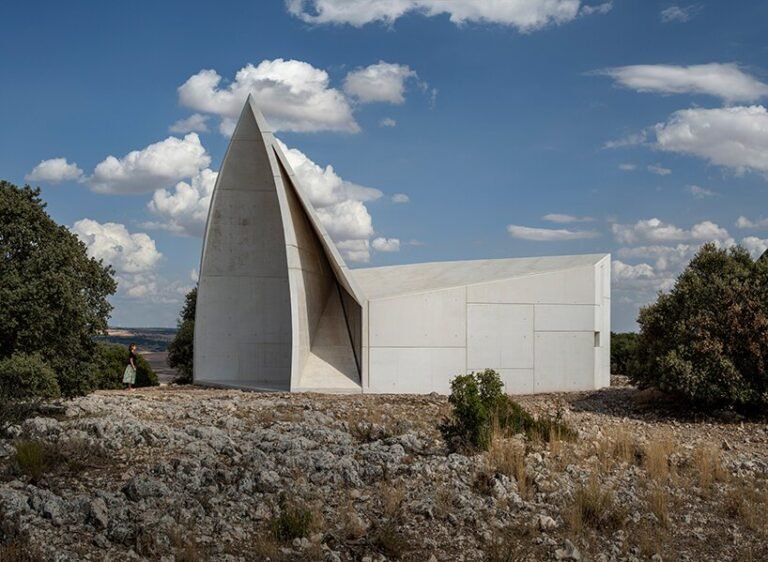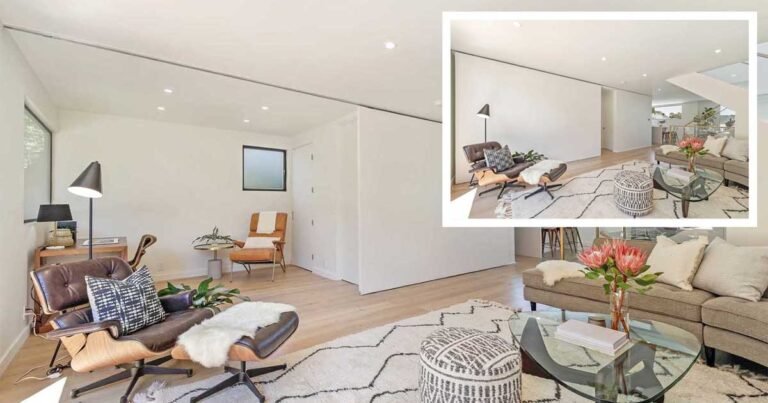MVRDV pavilion honors 500 years of social housing in augsberg, germany
envisioning the ‘next 500’ years of social housing
MVRDV unveils a celebratory pavilion in Augsberg, Germany to honor the 500th anniversary of the Fuggerei — the world’s oldest social housing complex. The completion of the so-called ‘NEXT500’ pavilion kicks off a five-week program of discussion and events centered on the future of social housing. The curving timber structure houses an exhibition dubbed ‘Fuggerei of the Future’ which proposes a new ‘Fuggerei code’ and three proposals for new similar complexes around the world.
While the social housing complex has stood in Augsberg since 1521, the 500th anniversary was celebrated last august 23rd, 2021 — exactly 500 years after its founding. The completion of the pavilion marks the beginning of the five weeks of programming. See designboom’s previous coverage here.
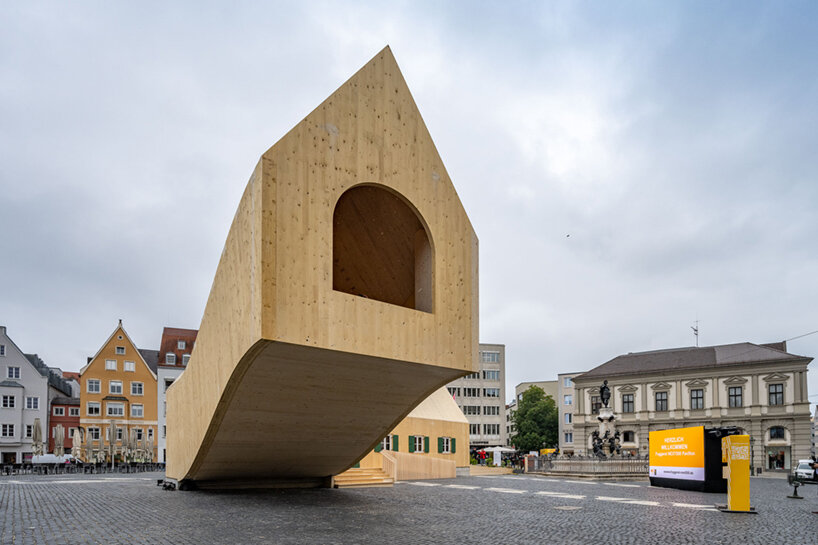 images © Eckhart Matthäus | @eckhartmatthaeus
images © Eckhart Matthäus | @eckhartmatthaeus
a cantilevering space for lectures and debates
MVRDV’s NEXT500 pavilion in Augsberg, Germany takes shape as a long, narrow, gabled building inspired by the long terraced houses of the Fuggerei (see here) social housing complex itself. Rather than a single straight block, one end of the pavilion is curved and raised up to suggest its role in looking out to the future Fuggereien, both in Augsburg and around the world.
This lifted end forms cantilever extending 8.5 meters (28 feet) which houses a tribune for lectures, debates, workshops and other cultural events. MVRDV (see more here) builds the structure entirely from cross-laminated timber, pushing the boundaries of modern CLT technology with its eight-metre cantilever and double-curved elements.
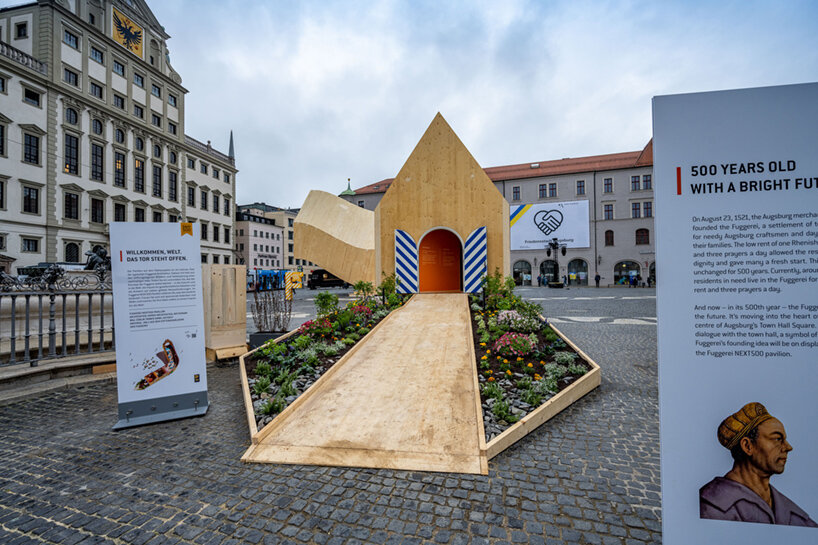
sustainable construction by mvrdv
Sustainability played a critical role in the selection of this structural approach; wood stores carbon instead of releasing it into the atmosphere, while CLT allowed the pavilion to use a modular system that makes the pavilion easily demountable, ensuring it can have a second life within a social or sustainable context. The wood is sourced from the Fuggerei’s own forests, while the structure’s wooden interiors were built by a local carpenter.
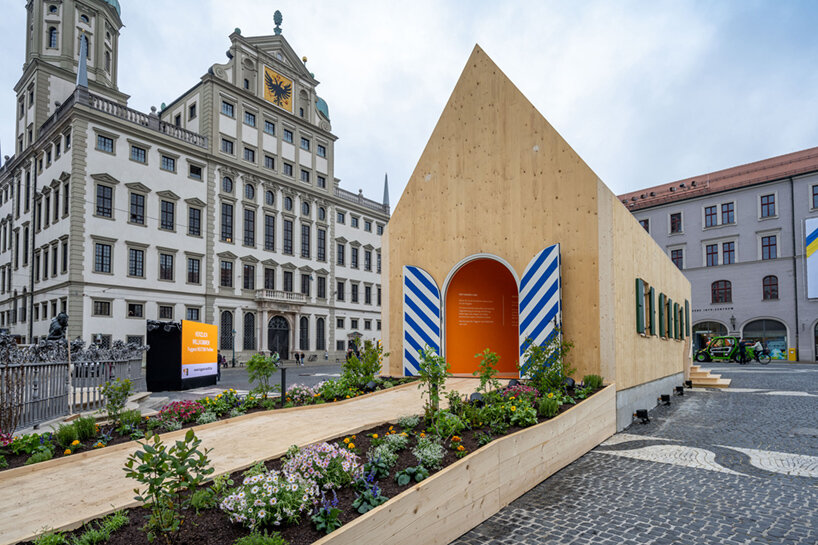
inside the pavilion in augsberg, germany
Inside the pavilion, visitors can experience an exhibition on the ‘Fuggerei of the Future,’ Though the Fuggerei was founded in 1521 by the German merchant Jakob Fugger, in these times of housing shortage, climate crisis, social inequality, and isolation, the sustainability-oriented and people- centred concept of the Fuggerei still offers a model for our current era.
For the exhibition, MVRDV and the Fugger Foundation studied the existing complex in Augsburg and, in line with the Fuggerei’s newly written ‘Fuggerei Code,’ distilled the complex’s formula for successful social housing. The result is eight simple ‘building blocks’ that provide the basis for a system for new Fuggerei that can be adapted to differing contexts worldwide. These building blocks are also referenced in the pavilion’s internal layout, with eight different spaces for the exhibition and events inspired by the eight building blocks.
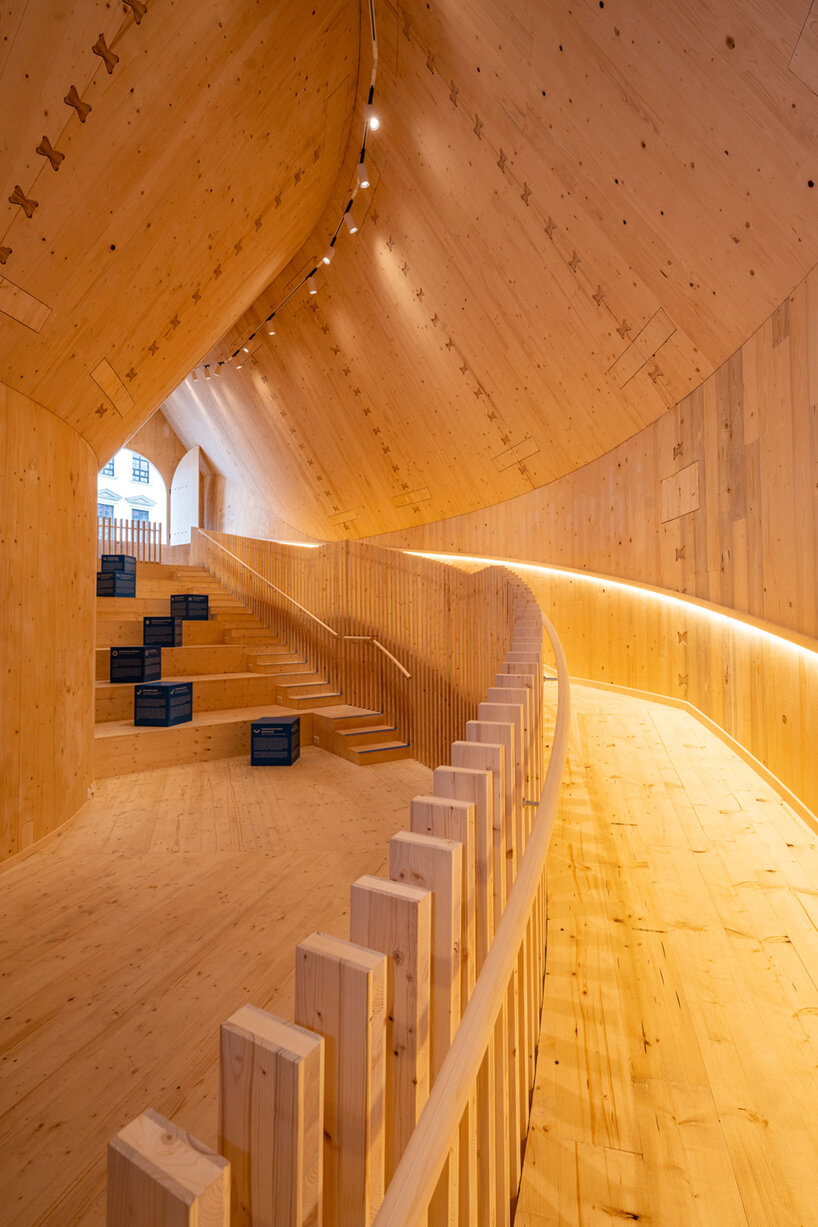
the three proposals for a future fuggerei
To test these principles, MVRDV also developed three proposals for Fuggerei both inside and outside Europe. The first is proposed for the original hometown of Augsburg, Germany, and is distinguished from the original Fuggerei by its educational focus, aiming to provide self-determination and to reduce the city’s wealth gap through education.
The second Fuggerei of the future is intended for a community in rural Lithuania, focussing on elderly poverty and a crisis in social care due to an aging population with a complex set in a beautiful natural environment.
The third Fuggerei focusses on Rothumba, a remote fishing village in Sierra Leone, with the strategy of empowering residents and creating a safe environment for women and children. Based on the Fuggerei Code and building blocks developed in the study, the appearances of these future Fuggereien depend on their purpose and location, but the principles are the same as the 500-year-old original.


